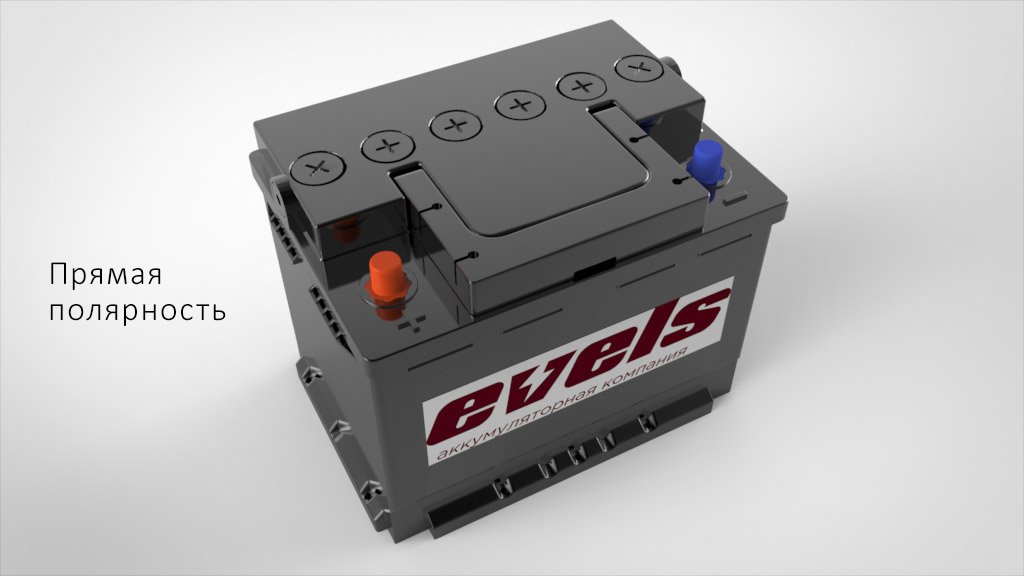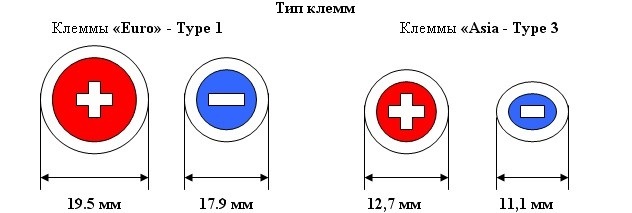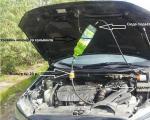How important it is not to confuse the direct and reverse polarity of the battery
Good afternoon friends! We have already talked a lot about different types of engines, but practically did not touch on the operation of the battery. Each of us knows firsthand how important it is to keep it in working order. A bad battery charge threatens the impossibility of starting the engine after parking. One of the interesting questions on this topic is whether the polarity of the battery should be direct or reverse. Let's see what it is and why it is necessary.
The most dangerous thing is that the polarity of some batteries may differ. If installed incorrectly, it may cause a short circuit, resulting in a fire in the vehicle. To do this, you need to understand what is the difference between direct and reverse polarity in various types of batteries. As you know, the positive terminal must be connected to the positive output of the battery, and the negative, respectively, to the negative, which is powered by the car body.
However, the design features of different cars may differ from each other, which is why manufacturers produce products with exactly the opposite polarity. At the same time, the batteries themselves may not fundamentally differ in appearance. Only in the place where the positive terminal should be expected will be the same, but negative. There is a good hint so as not to confuse.
The fact is that the platform for the battery has a limited space and if the battery is installed incorrectly, then the length of the wire may simply not be enough.
Battery polarity on domestic and imported cars
So, let's take or imagine any car battery before our eyes. For clarity, this should be the side on which the stickers or labels of the manufacturer are placed. Confusion often arises precisely because different people look at the battery from different angles, because even under the hood it can be placed from different angles. The main differences found their expression among manufacturers from different continents.
As for domestic batteries, they differ in the so-called "direct" arrangement of terminals. In this case, the positive terminal is placed on the left, and the negative terminal on the right. 
But many European, American and part of Asian factories install the terminals the other way around. Therefore, to determine exactly, you should always look at the front side of the product.
Ways to Determine Positive and Negative Outputs
What to do and how to distinguish the purchased battery if the manufacturer could not be identified? There are two main standards that relate to the location of contacts. If you pay attention to what is written below, then you can always easily deal with negative and positive outputs. So, what does the positive terminal mean and what are its main characteristics - it is usually 19.5 mm in diameter. At the same time, the minus one has a standard diameter of 17.9 mm. 
Every motorist can reasonably notice that measurements require equipment, at least a caliper. What notation or other defining method can help if such a tool is not at hand? The simplest method is with a glass of plain water. We lower and immerse both wires at some distance from each other. After a while, you can notice how small air bubbles begin to boil near the negative terminal.
Direct polarity is generally denoted by the number 1, and reverse polarity by zero.
Even if you had to buy a battery with reverse polarity, it does not matter, because today there are special adapters from direct to reverse on sale in order to achieve the correct placement of current leads (extension cords).
Friends, this is where we will complete the discussion of the nuances of batteries in cars and polarity. I also wrote a whole series of articles on, and. We will be glad to meet you in future articles. Good luck to all!





